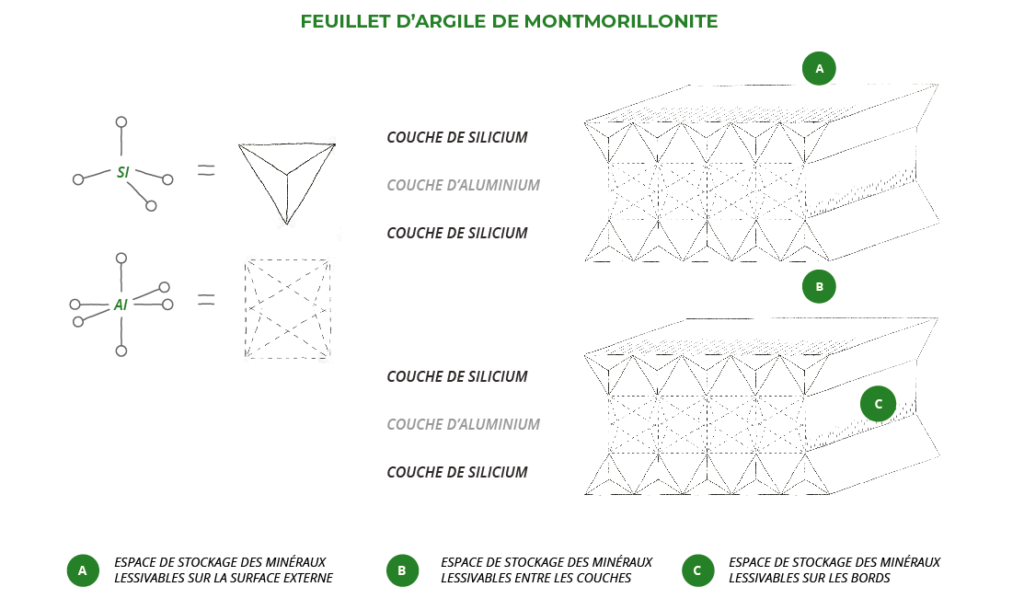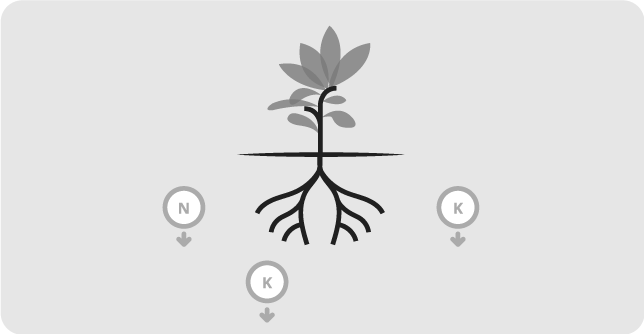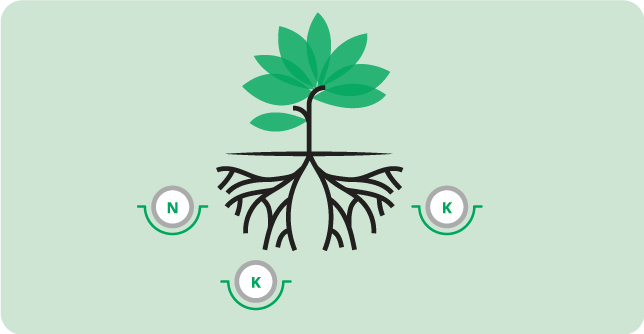Retaining fertilizers in the soil
As humus forms on the surface, let’s see now how clays are formed at depth. To form clays, the roots will dissolve the bedrock, stones and pebbles in the soil by secreting very strong organic acids called root exudates. These attacks will transform the rock into a mineral fraction of crystals thus forming clays. Clays are silicates of iron and alumina. Rocks are composed mainly of silica, iron and aluminum, which are the majority atoms in the earth’s crust (with Silicon 26%, Aluminum 7% and Iron 4%).
When a root has pumped everything it needs out of a rock, it will leave behind a lot of silica, iron and aluminum in the root periphery. These compounds being trace elements, it consumes very little. These elements then concentrate and crystallize around the roots.
As with harvesting sea salt, the evaporation of seawater concentrates the salt which eventually crystallizes on the surface. The same thing will happen around the roots of plants, all these elements of silica, iron and aluminum which concentrate more and more will crystallize in iron silicate and alumina, to form clays. These newly formed clays are of high quality. Clays are crystals with large layers that have a cation exchange capacity. These clay minerals have the remarkable property of retaining potash, magnesia, calcium and all other cations. Life manufactures a system that will allow it to feed itself.
This phenomenon is natural. Look at the shrubs growing on some landless cliffs! It’s not a miracle, they just create their own soil with their root system.

The roots can thus make 3 to 5 t / ha / year of clay over two meters deep.
Clays play an essential role in soils to reduce leaching phenomena, according to their 3 main characteristics: their size, layer structure and the presence of negative charges induce the property of fixing and exchanging ions with the soil solution. The quality of clays, made up of interlayers, is defined by the internal surface area of all the layers per gram. The values vary from 80 m² / g to 800 m² / g! Knowing that clay stores minerals and water between its layers, the larger the surface, the greater the storage capacity. The main clays are kaolinite (a white clay), illite (a non-swelling clay) and montmorillonite (a high quality green clay). Montmorillonite has the best storage capacity, ten times greater than kaolinite.
To create soil is to create clay and improve its capital. It is therefore essential to optimize the root system of your crops as much as possible because the richness is in-depth.
Good plant cover will help preserve its soil heritage because when it rains, the best clays are released (montmorillonites). They are clays with large internal surfaces that easily disappear because they can remain in suspension in water for 48 hours. Kaolinites and illites remain more, but they are the least qualitative clays. A living soil in good condition benefits from an 80 times greater water absorption capacity. Its permeability is around 80mm per hour while it is only 1mm on compacted silt.
Direct sowing under cover offers a real alternative so as not to break the structure of its clays and increase the porosity of its soils.

